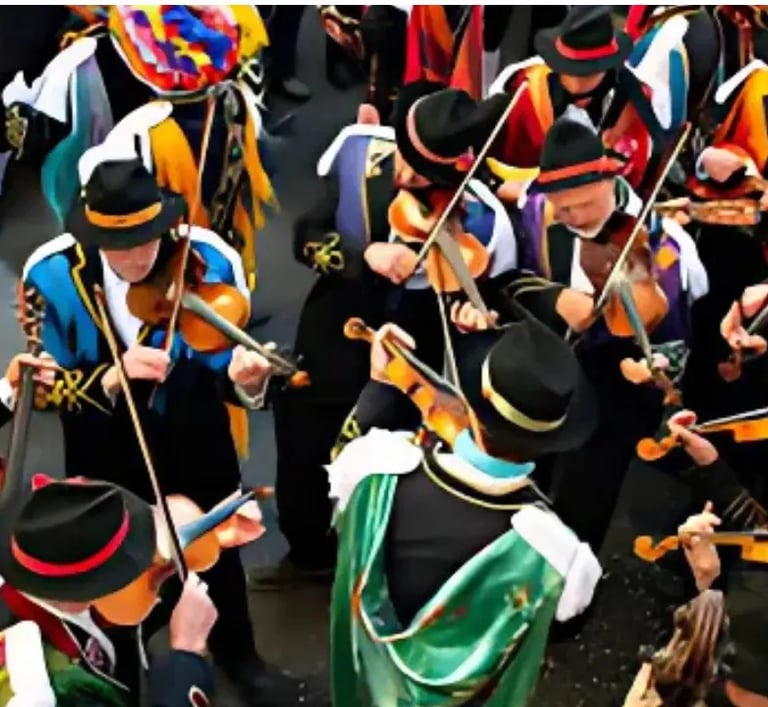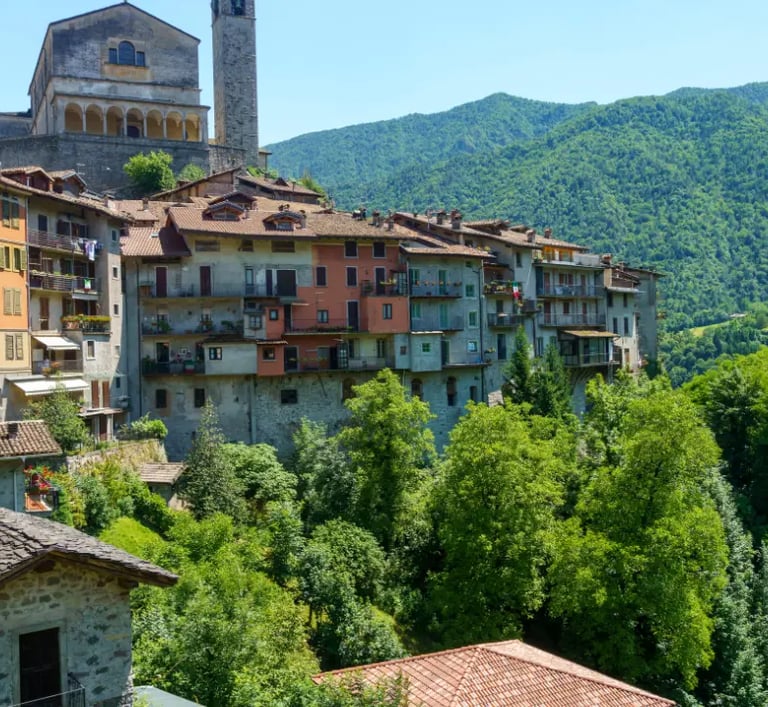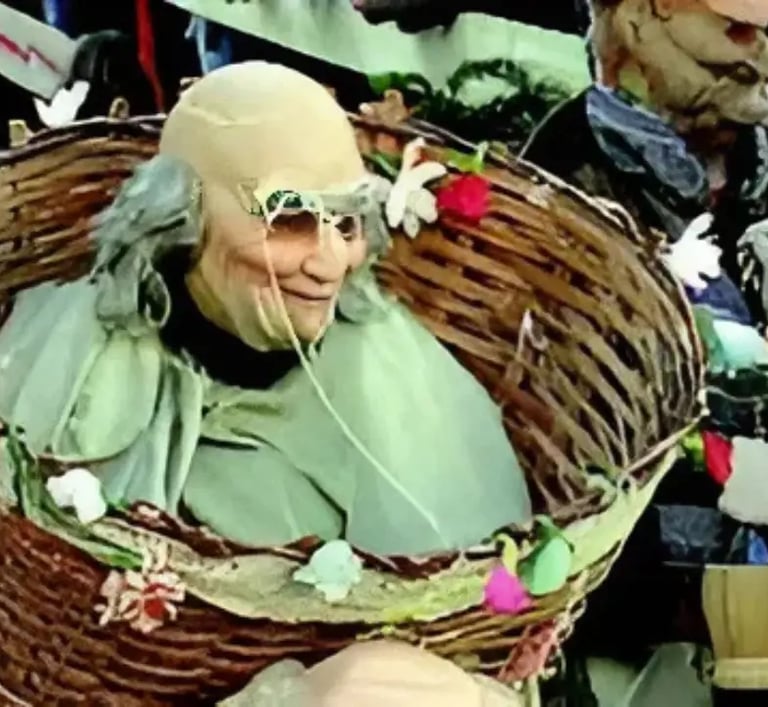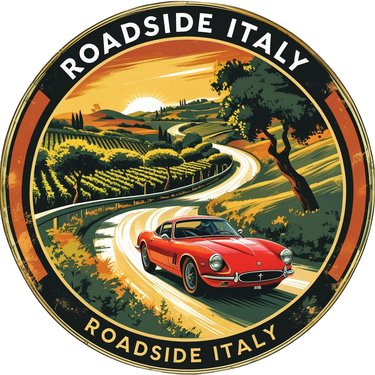Dancing Devils and Alpine Beats: Inside Bagolino’s Carnival
Step into the heart of Lombardy’s Bagolino Festival — a centuries-old carnival where masked dancers, haunting violins, and village legends transform this quiet Alpine town into one of Italy’s most captivating celebrations.
FEASTS&FESTIVALSLOMBARDIA






Imagine waking before dawn in a frozen Alpine village to the haunting sound of violins echoing off stone walls, then stepping outside to witness masked figures in black velvet dancing ancient choreographies that haven't changed in centuries. This isn't a theatrical performance or a tourist attraction — it's a living ritual that predates written history, kept alive by a mountain community that refuses to let their ancestors' voices fade.
This is Bagolino in February, where carnival becomes something far deeper than celebration.
When February's frost settles on Lombardy's mountains, the small village of Bagolino bursts into life with a rhythm that echoes through its cobbled lanes. The Bagolino Festival, one of Italy's oldest and most unique carnivals, isn't just a celebration — it's an inheritance, passed down through generations. Here, masked dancers in black velvet and golden ribbons swirl to the eerie strains of violins, and the line between history and folklore blurs in the smoky Alpine air.
The Ancient Soul of Bagolino
Bagolino sits tucked deep in the Brescian Alps, not far from Lake Idro. At first glance, it's a sleepy mountain town with wooden balconies and stone-roofed houses — but come carnival time, it becomes a stage for one of Italy's most authentic folk traditions.
Unlike Venice's opulent masks or Viareggio's parades, Bagolino's Carnival is raw, rustic, and deeply local. It's not performed for tourists — it's lived for the community itself. The "Balarì" (dancers) and "Maschér" (masked figures) are the heart of the event, performing ancient choreographies accompanied only by violins — no brass bands, no modern sound systems, just haunting live melodies.
According to the Italian Ministry of Culture, the Bagolino Carnival is one of the oldest and best-preserved examples of rural Alpine rituals still performed today.
When the Devils Dance
At dawn on the Monday before Lent, the streets of Bagolino fill with an unusual sight — men dressed as women, faces covered by wooden masks with delicate painted features. They move gracefully, yet the effect is unsettling, like stepping into another time. These are the Balarì, guardians of a ritual that predates written records.
Each dance tells a story: of fertility, rebirth, and the eternal cycle of winter giving way to spring. The dancers wear black trousers, embroidered waistcoats, white shirts, and hats dripping with colored ribbons. Their movements, intricate and precise, mirror the violin's rising tempo — sometimes solemn, sometimes frenzied.
And then there are the "Maschér", the mischievous masked characters who tease onlookers, mock authority, and bring chaos to the order of the dance. Their humor is earthy, their language thick with dialect, and their role is essential — they represent the spirit of freedom before the austerity of Lent.
Alpine Echoes and Sacred Roots
The Bagolino Festival carries echoes of pagan rituals, later absorbed by Christian traditions. Historians trace its origins to fertility rites that celebrated the end of winter. Over the centuries, the event evolved, blending with Catholic customs, yet never losing its ancient spirit.
Even today, the violins of Bagolino are taught from father to son, preserving tunes that aren't written down but passed by ear — a living form of oral Alpine culture. Ethnomusicologists studying the area have compared Bagolino's violin style to medieval court dances, an extraordinary survival in modern Europe.
Food, Feasts, and Mountain Hospitality
No Italian festival is complete without food — and Bagolino is no exception. During the carnival, kitchens fill with the scent of polenta taragna, Bagòss cheese, and homemade salami. Bagòss, the local cheese, is made from raw cow's milk and aged in cellars, giving it a nutty, golden flavor that pairs perfectly with red wine from nearby Valle Sabbia.
Locals invite visitors to join their tables, sharing plates of stewed meat and pastries dusted with sugar. It's not a show — it's pure hospitality, an invitation into the soul of a mountain community.
Not Everyone Knows
Few visitors realize that Bagolino's Carnival almost disappeared during the 20th century. Wars, emigration, and modernization threatened to erase the tradition. But in the 1950s, the townspeople revived it, forming associations to teach the dances and rebuild costumes by hand.
Another hidden gem? The Bagolino Ethnographic Museum (Museo Etnografico di Bagolino), which houses costumes, masks, and recordings of the ancient dances. It's a must-visit to truly understand how this small village became one of the hidden gems in Italy for cultural travelers seeking authenticity.
And if you visit outside carnival season, you might still hear the sound of violins drifting from a mountain farmhouse — a sign that the next generation of Balarì is in training.
Planning Your Visit
The Bagolino Festival typically takes place during the two days before Lent (Monday and Tuesday), but festivities begin as early as the preceding weekend. The best way to experience it is to stay in Bagolino itself or nearby Idro, where small family-run B&Bs welcome guests warmly.
Wear warm clothes — the mountain air can be biting in February — and good shoes for navigating steep cobblestone lanes. Don't expect big hotel chains or flashy entertainment; this is a festival of roots and rituals, not spectacle.
How to Get There
By Car: From Brescia, take the SS237 towards Lake Idro (around 1 hour 45 minutes).
By Public Transport: Buses run from Brescia to Idro, then local shuttles or taxis to Bagolino.
By Air: Nearest airports are Brescia-Montichiari or Verona Villafranca.
Why Bagolino Is an Italian Treasure
The Bagolino Carnival stands apart from other Italian festivals because it hasn't been commercialized. It embodies what makes the feast and festival in Italy culture so remarkable — the ability of small communities to turn ancient rituals into living heritage.
For travelers who crave authenticity and cultural immersion, Bagolino is one of the hidden gems in Italy — a place where time seems to pause, and music, movement, and tradition fuse into something unforgettable.
FAQ
Q1: When does the Bagolino Festival take place? It usually happens in February, on the Monday and Tuesday before Lent, though rehearsals and smaller events begin days earlier.
Q2: Do I need tickets to attend? No — all events are open and free. However, booking accommodation early is essential, as rooms fill quickly.
Q3: Can women participate as dancers? Traditionally, only men perform the role of Balarì and Maschér, following centuries-old customs. Women play key roles behind the scenes in costume-making, music, and hospitality.
Q4: What should I bring? Warm clothing, waterproof shoes, and curiosity! The festival is outdoors, and the Alpine climate can be cold and snowy.
Q5: Is Bagolino suitable for families? Absolutely. Children are welcome, and the atmosphere is festive, though the masks can appear a bit eerie to the very young.
